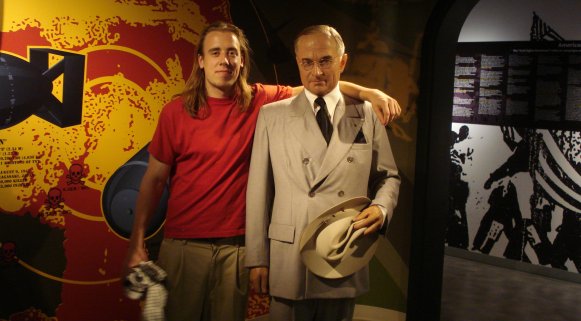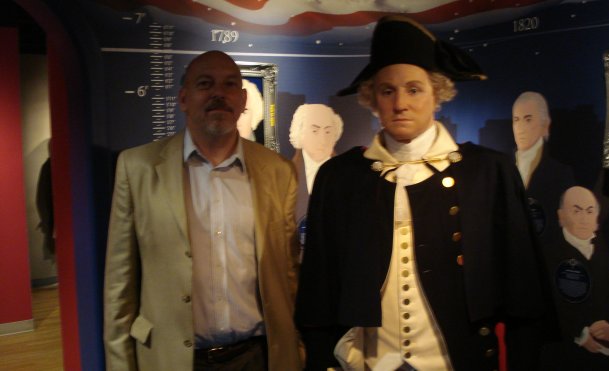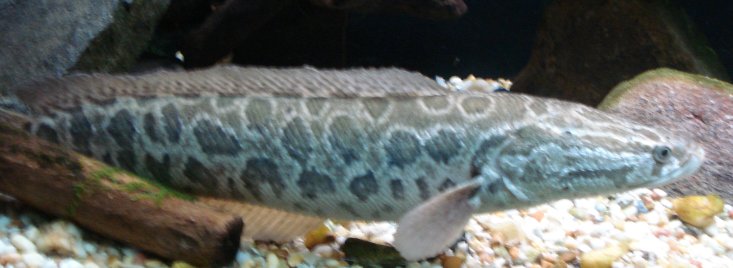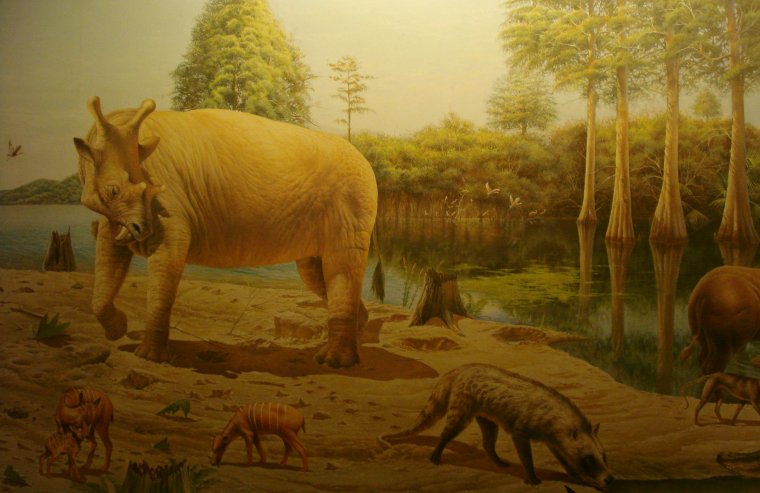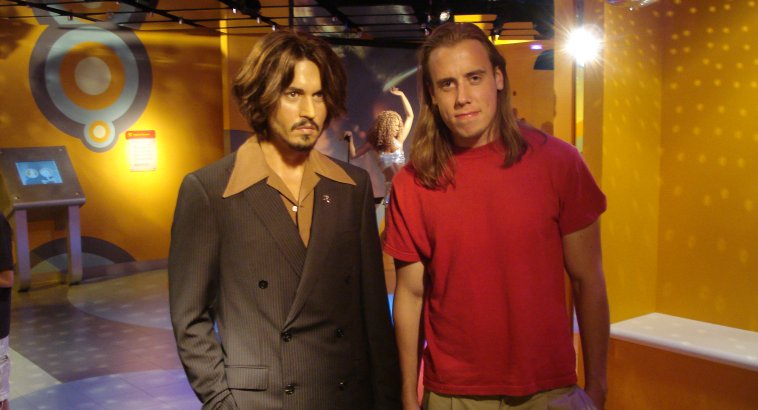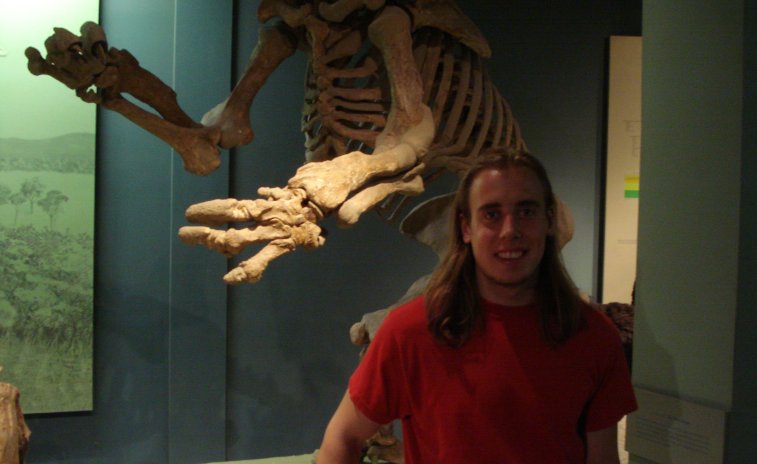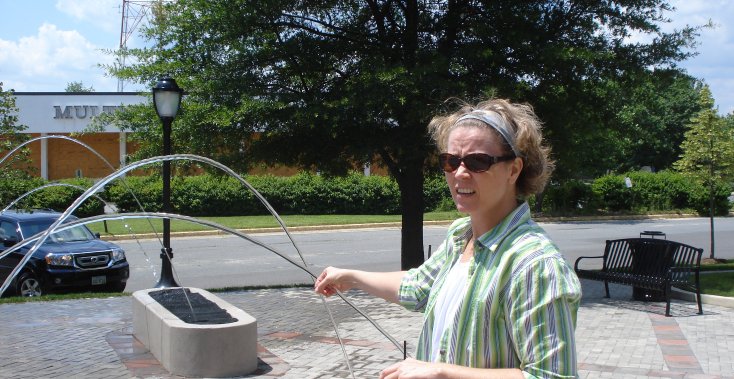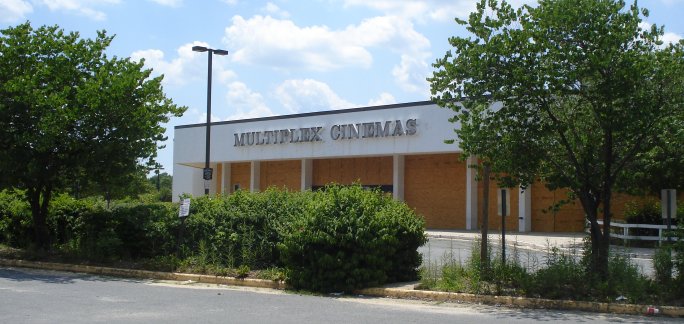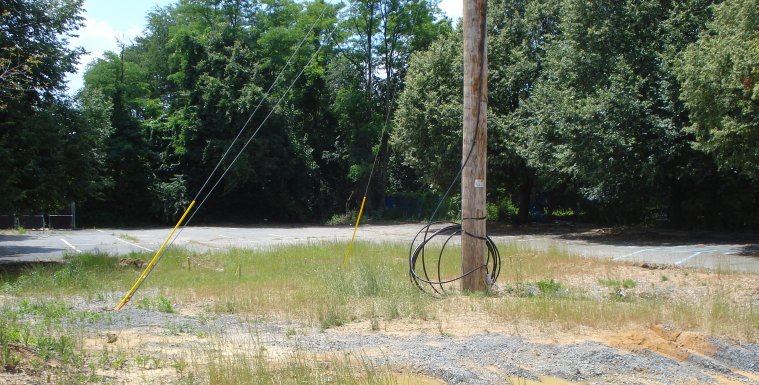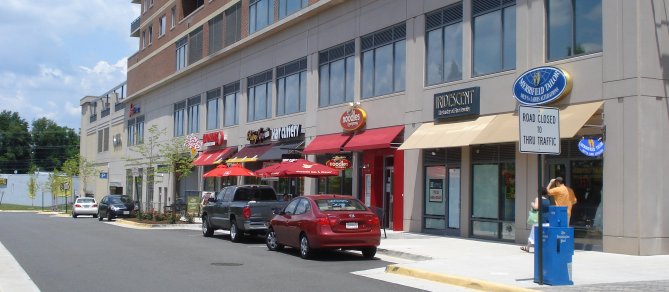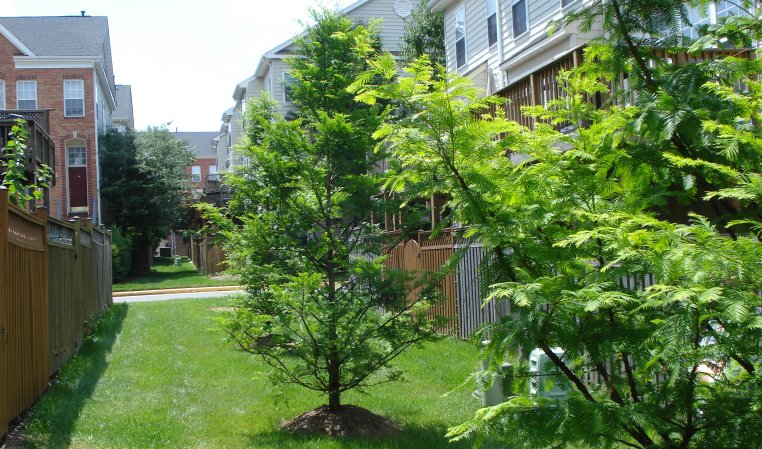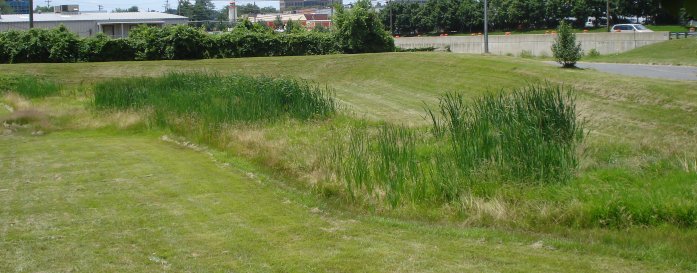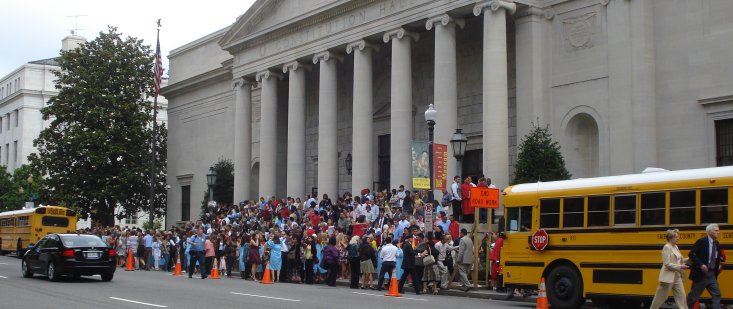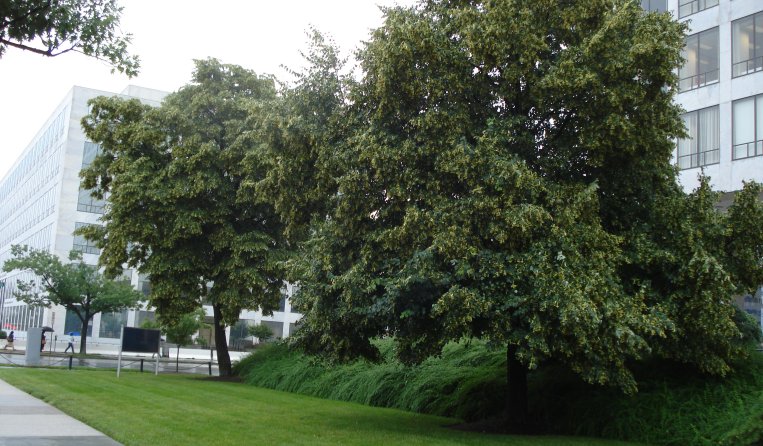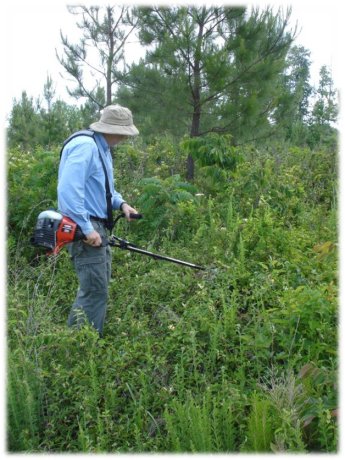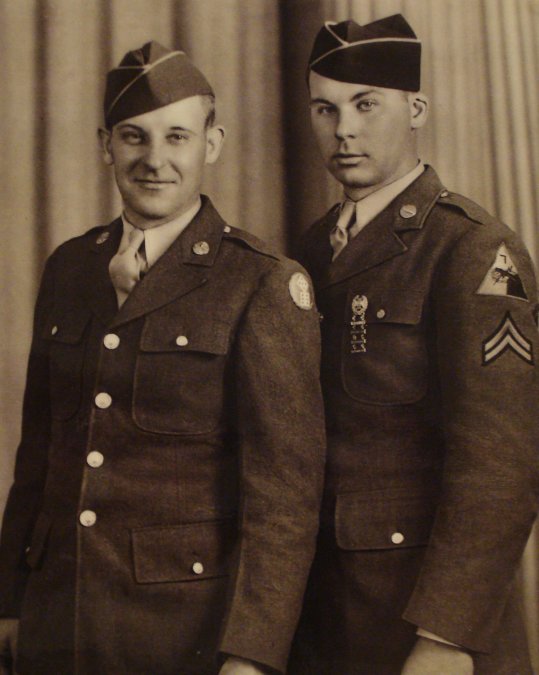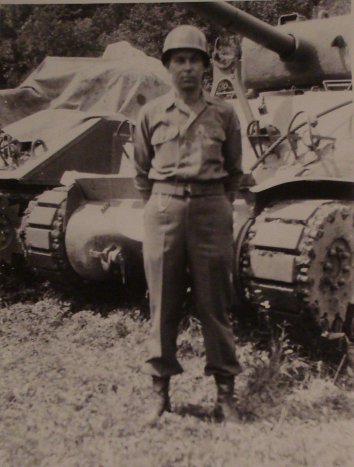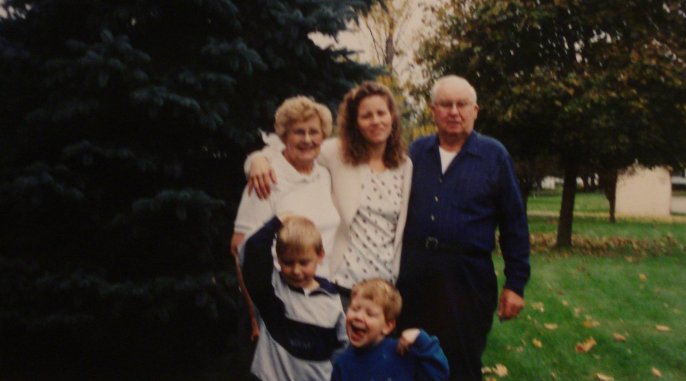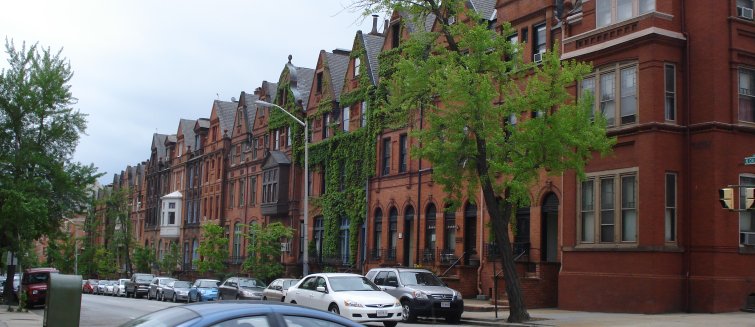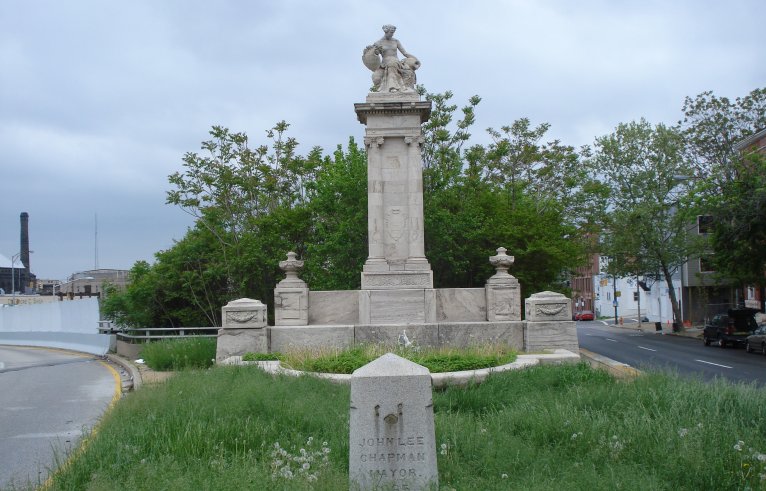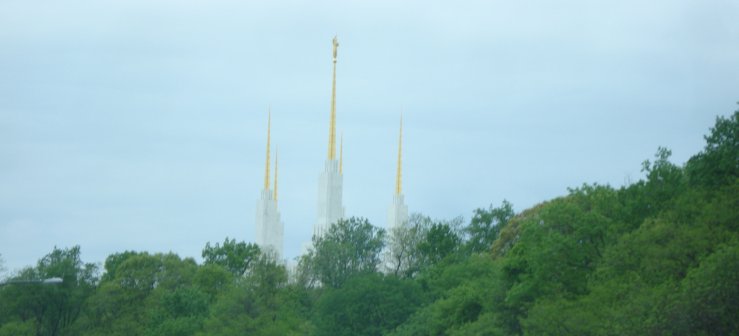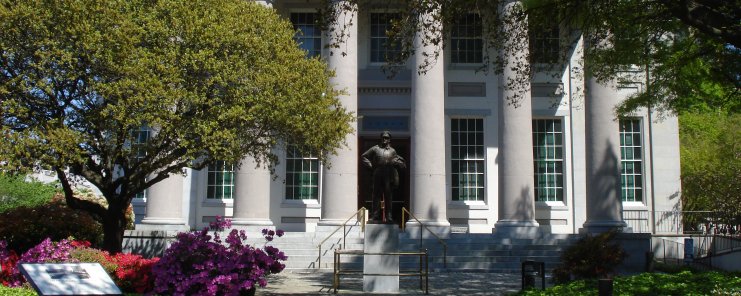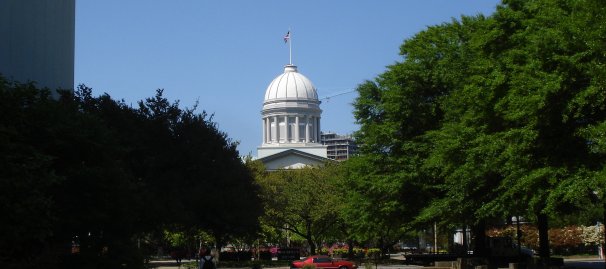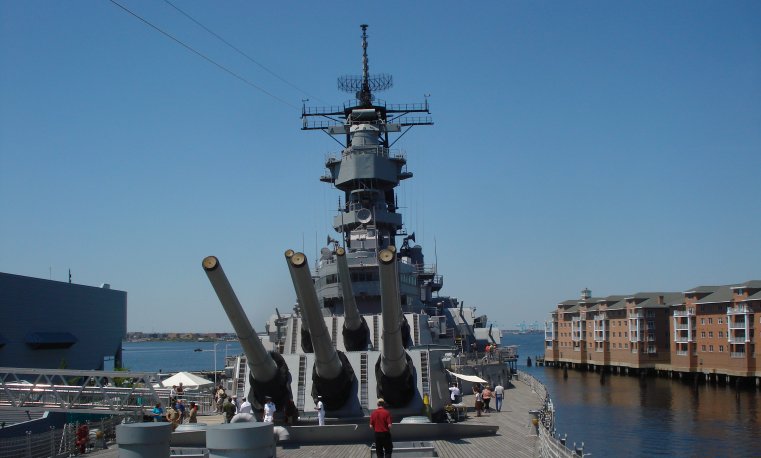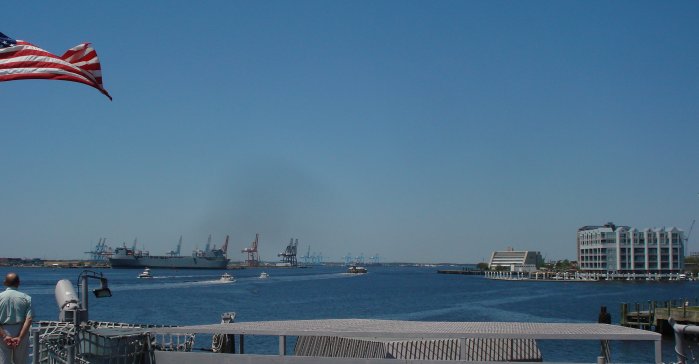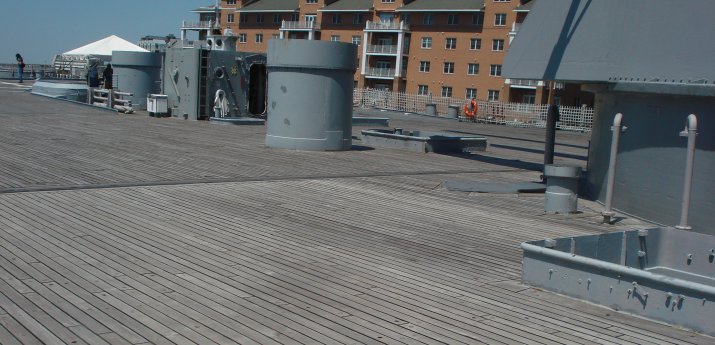They closed the gates of Ft Meyer after the 9/11 terrorist attacks. I didn’t know they were reopened. Actually they are not open to through automobile traffic, but bikes can use the bike route that goes through Ft Meyer and Arlington Cemetery.
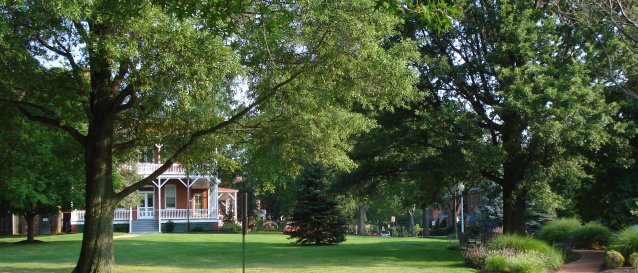
Going this way saves me around ten minutes riding and it lets me avoid ten minutes worth of the least pleasant and most dangerous part of the ride. To transit Ft Meyer, I need only show my government ID and be polite to the guards. As you can see in the picture above, Ft Meyer is nice to with well kept period architecture. After riding along the quiet streets of the base, you come out into Arlington Cemetery and it is all downhill from there.
I like the idea of going through and past all the monuments. My ride now takes me through Arlington Cemetery, across Memorial Bridge, past the Lincoln Memorial to the Washington Monument and then down the Smithsonian Mall in sight of the Capitol. I often stop to read the plaques and later look them up on the Internet. The whole idea of a memorial is to remind visitors of the event or concept. Daily exposure to history really does work, at least for me.
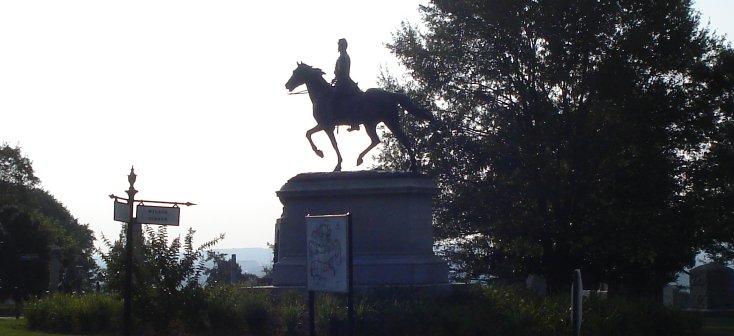
A good example is the statue above. It is Phil Kearny. I knew about Ft Phil Kearny, which guarded to Bozman Trail in Wyoming. The Bozman trail is essentially I-90 these days and we stopped off at the fort on one of our cross country trips. But I never knew much of anything about its namesake. After seeing the statue, I did a little reading. Phil Kearny was a respected professional soldier and Union officer killed in the Battle of Chantilly, not long after uttering the ominous words, “The Rebel bullet that can kill me has not yet been molded.”


